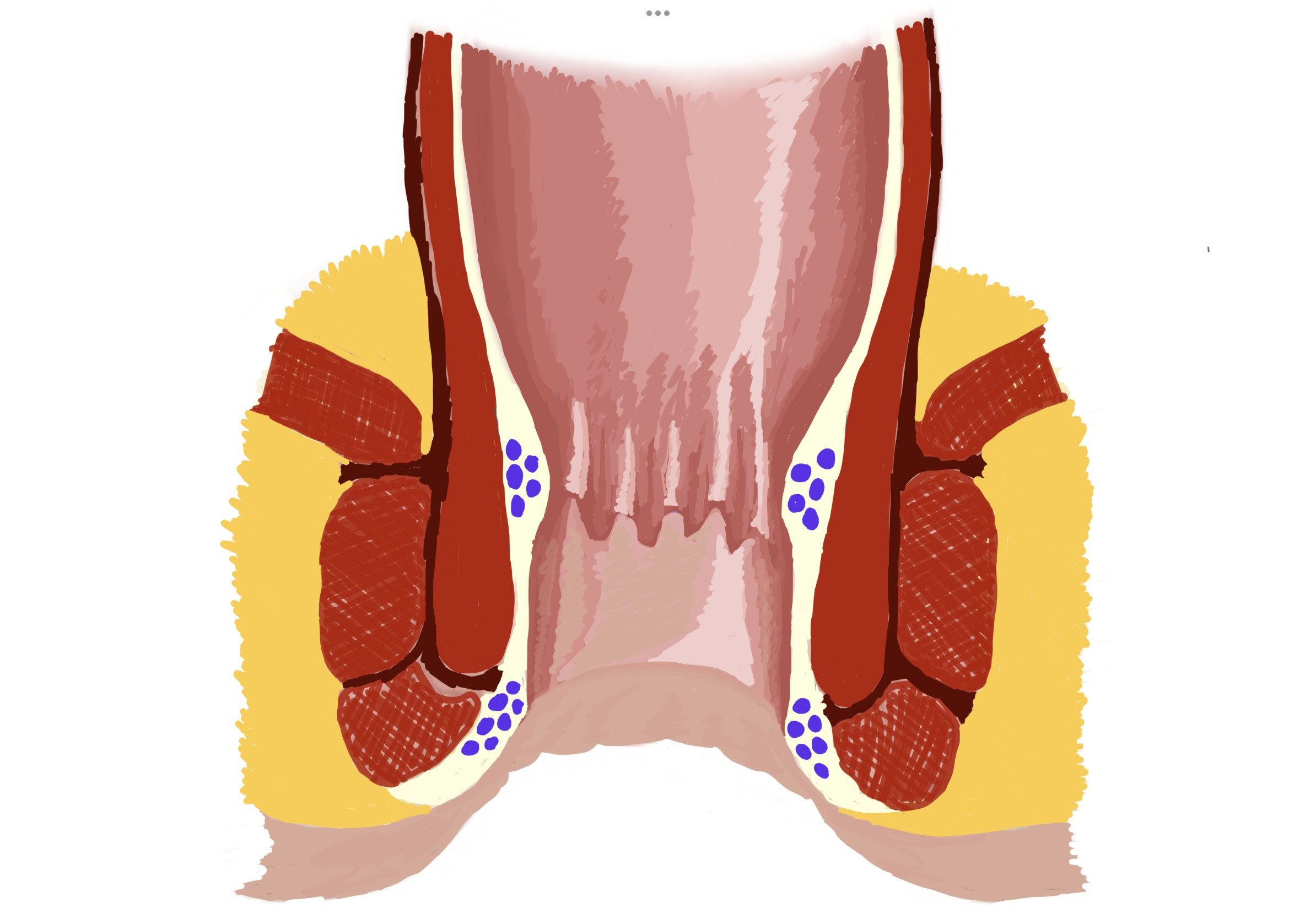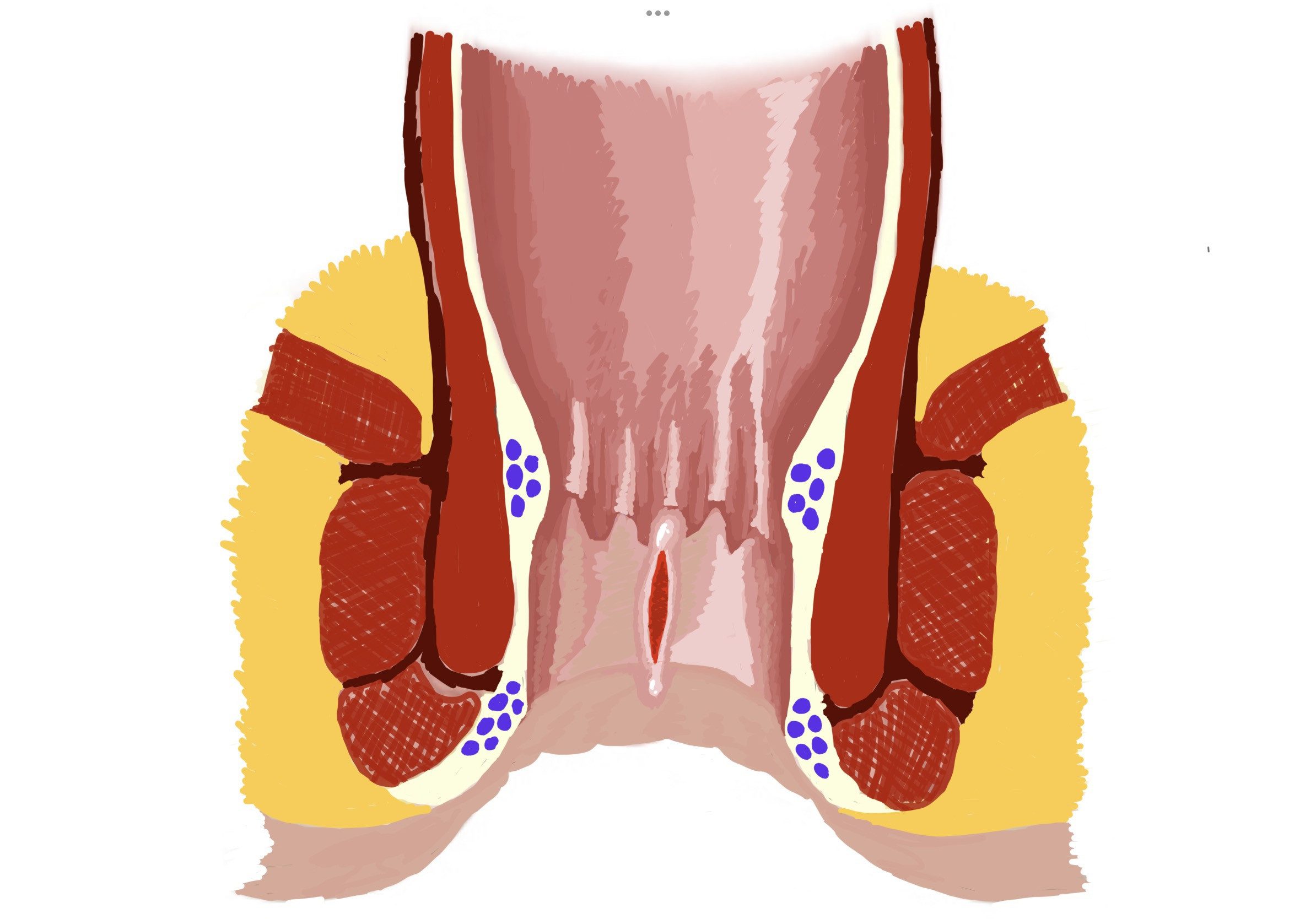Anal fissure is a little crack (tear, wound, ulcer) inside the anal canal, on the lower, skin covered half. Most of the time there is only one fissure but it can be two and rarely more. Fissures might be accompanied by a sentinel skin tag (sentinel pile) at the outside end of the tear, in the anal opening, as well as by an anal polyp (officially hypertrophied Morgagni papilla) at the inner end of the tear in the middle of the anal canal. The longer the anal fissure exists the more likely it has a sentinel tag and an anal polyp with it, and the bigger these accompanying growths are.
Anal fissure often starts with constipation, a large hard stool makes a crack. It would normally heal in a few days, but in case the pain or a coincidental increased stress level keeps the anal muscles tight, the fissure does not get enough blood supply to heal, and becomes chronic. The treatment for anal fissures is primarily conservative. It is successful in most cases. Rarely surgery is needed, which aims to relax the anal muscles, still as conservatively as possible.
What signs and symptoms one has with this problem?
Pain and bleeding are the leading signs. Anal fissure is one of the most painful anal condition. The pain might only be felt during toilet use, but most of the time also after toilet for 20 minutes to a few hours. Some patients have all day pain, after the morning toilet. Bleeding is normally minor, fresh red, only noticed on the toilet paper. Some people though has no pain or no bleeding, just noticed a small lump. Many patients believe they have haemorrhoids, and some even has been told he does and treated for that.

